Whether you want to discover more about your connection to the famous Scottish clans or want to know how to visit your ancestors’ historic lands, then this is the Scottish travel guide for you! Here is how to discover 10 of the mosts famous Scottish clans.
This post contains affiliate links – thank you for supporting my site!
How to discover 10 of the most famous Scottish clans
(Click on the link to jump to the complete guide)
- Chisholm – For Clan Chisholm visit Glen Affric and Glen Strathfarrar – two of the most beautiful glens in Scotland.
- Drummond – To visit Clan Drummond discover the Strathearn region of Highland Perthshire and visit the spectacular Drummond Castle Gardens.
- MacGregor – To explore the lands of Clan MacGregor visit the beautiful hills and woodlands of The Trossachs, Rob Roys grave at Balqhidder and the stunning Loch Voil.
- Campbell – For Clan Campbell head to Argyll’s county town of Inveraray and visit Inveraray Castle – the home of the Dukes of Argyll.
- MacKenzie – To visit Clan Mackenzie explore the mountains of Kintail and visit Eilean Donan Castle, one of Scotland’s most iconic castles.
- Fraser – For Clan Fraser discover the pretty town of Beauly, the home of this clan made famous by the TV series Outlander.
- Cameron – The lands of Clan Cameron are around Fort William, Achnagarry and Lochaber – why not climb Ben Nevis?
- MacLean – For Clan MacLeod visit the Isle of Skye and the tiny isle of Raasay.
- Bruce – The home of Clan Bruce is in Clackmannanshire and Dunfermline – including the burial place of King Robert the Bruce.
- MacLean – For Clan Maclean visit the Isle of Mull, Coll and the West Highland Peninsulas to visit Clan Maclean.
Wondering which Scottish clan to visit?
Do you have Scottish clan? Just visit the Scottish surname search tool.
Remember that if you don’t have a name such as Campbell, Mackenzie or Stuart, you may still be connected to a clan. Many clans have accepted alternative surnames – for example, the Drummond clan was started by a Begg! Don’t forget to check both your paternal and maternal family names.
If you want to discover more about your Scottish clan or how to visit your ancestors’ historic lands, here is my step by step guide to planing a Scottish ancestry trip.
Read on for how to visit each of these 10 famous Scottish clans…
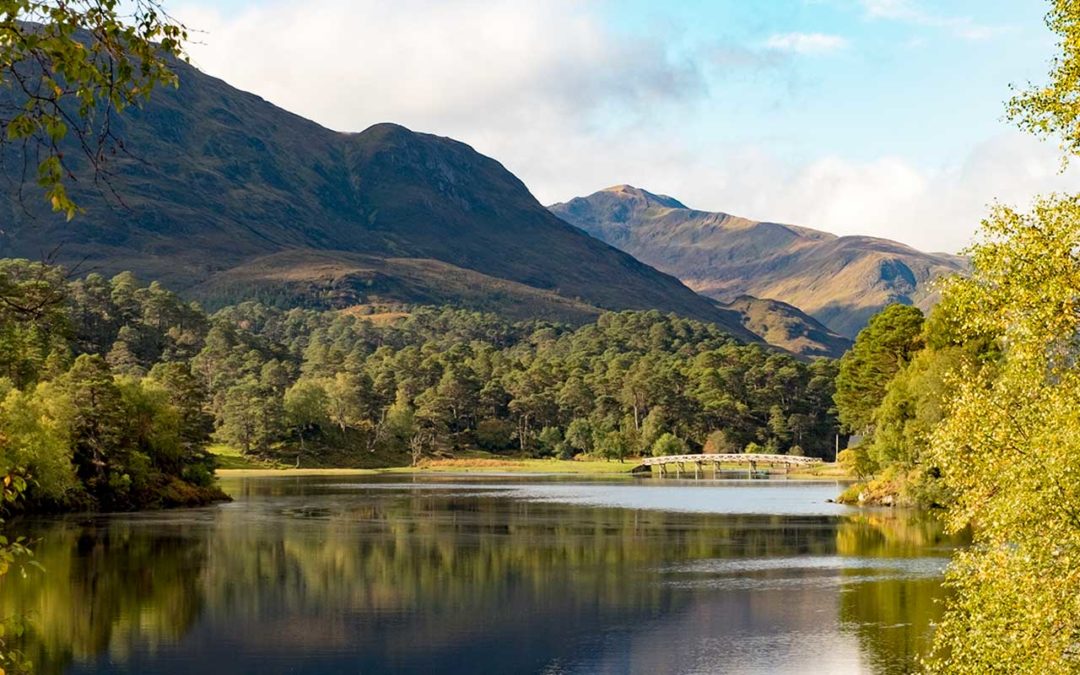
For Clan Chisholm – visit the beautiful Glen Affric near Loch Ness
Originally from the Scottish Borders (via Normandy) Clan Chisholm (Chesholme) gained control of the beautiful glens around Beauly when Alexander Chisholm married The Lady of Erchless in 1359. The Chisholms were most famous for cattle raiding and it is said they once stole 56 oxen, 60 cows, 300 sheep, 80 swine and 15 horses from Clan Rose! The Chisholm lands are all centred around Glen Affric. Here is how to discover Clan Chisholm.
- Explore Glen Affric – the best way to explore the Clan Chisholm lands is to hike the 11-mile circular path around Loch Affric. Amongst the remnants of Scotland’s ancient Caledonian Scots Pine forest, the walk takes you alongside the River Affric, past Loch Affric and Loch Beinn a’ Mheadhain amongst huge surrounding mountains. Shorter walks in the Glen Affric include the Dog Falls (2 miles, 1.25 hours) and the Viewpoint Trail (1.45 miles, 1 hour). The Forestry Commission has a great guide to Glen Affric.
- Stay at Erchless Castle – now private holiday accommodation, you can stay in the original Chisholm clan castle. Visit Erchless Castle.
- Clan Chisholm Burial ground – opposite the castle is the Erchless burial ground which contains many graves of the clan chiefs.
- Find the Chisholm Stone at Loch Mullardoch – At the head of Glen Cannich is a stone which marks a meeting point for Chisholms from Strathglass and Glen Cannich. Why not add a stone to the cairn to mark your visit?
- Visit the Struy Stone – a memorial to William Chisholm who supported the Jacobite cause and was standard bearer of the chief of Clan Chisholm and died at Culloden.
> Read more: how to visit Glen Affric
> Stay at Eagle Brae lodges, try Caledonian Glamping near Cannich, Craskie Glamping Pods in Cannich Glen, The Boathouse at Tomich, or East Craigdhu Cow Byre near Erchless Castle.
> Find out more about Clan Chisholm
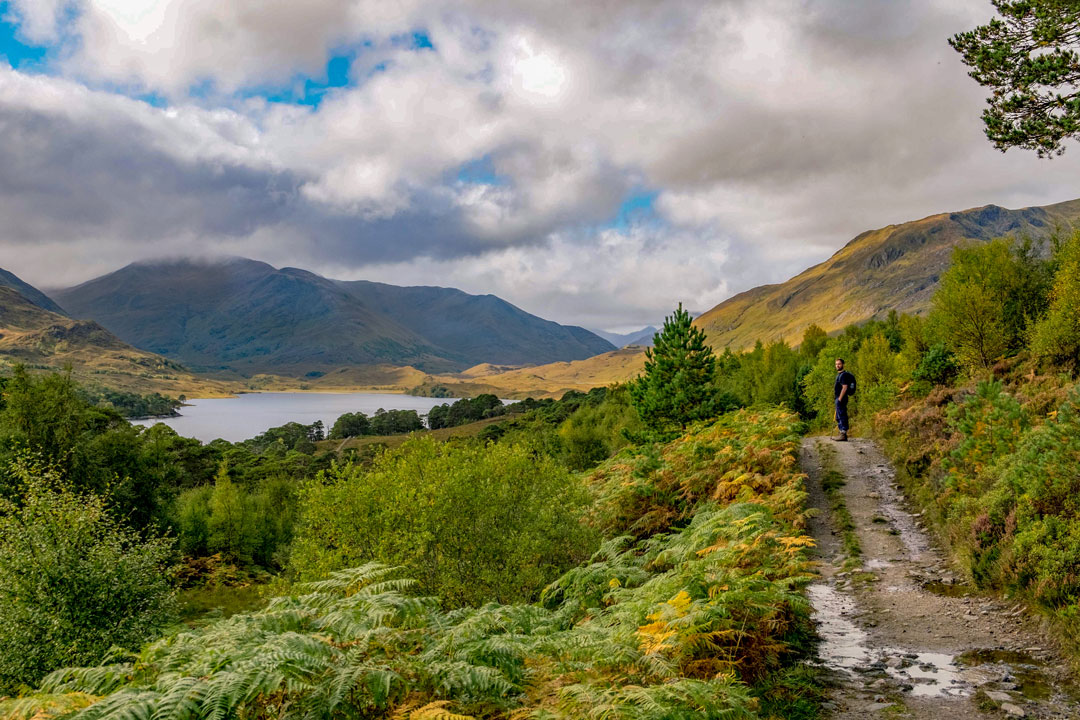
For Clan Drummond – visit Strathearn and Drummond Castle Gardens
Originally from the village of Dryman (Drummond) near Stirling, the first chief of Clan Drummond was Malcolm Beg who in ca 1250 took the name Drummond. Stauch supporters of the Royalist and Jacobite cause, after fighting in the Battle of Bannockburn in 1314, the clan was gifted its extendive lands in Strathearn in Perthshire by Robert the Bruce. Here is how to discover Clan Drummond:
- Visit Strathearn – the River Earn runs from Loch Earn to the Firth of Tay south of Perth. Along the strath (or broad-valley) of the river lies the pretty villages of St Fillians, Comrie, and Crieff to the north and Aucherader to the south. At St Fillians walk up the ‘scree path‘ which winds its way up the hillside above Loch Earn. The views from the top across the loch to the mountains are superb,
- Drummond Castle Gardens – with one of the most beautiful designed gardens in Scotland, Drummond Castle was built by John, 1st Lord Drummond around 1490 on the Gask Ridge near Crieff. Drummond Castle Gardens are open to the public and featured in the TV series Outlander. The tower house and mansion are private.
> Read more: how to visit Perthshire
> Stay at: The Taybank Hotel, Dunkeld, a super cool and stylish boutique hotel, Dundurn Mill with stunning views and private river, Fairness Cottage, Near Comrie, or Comrie Croft.
> Find out more about Clan Drummond
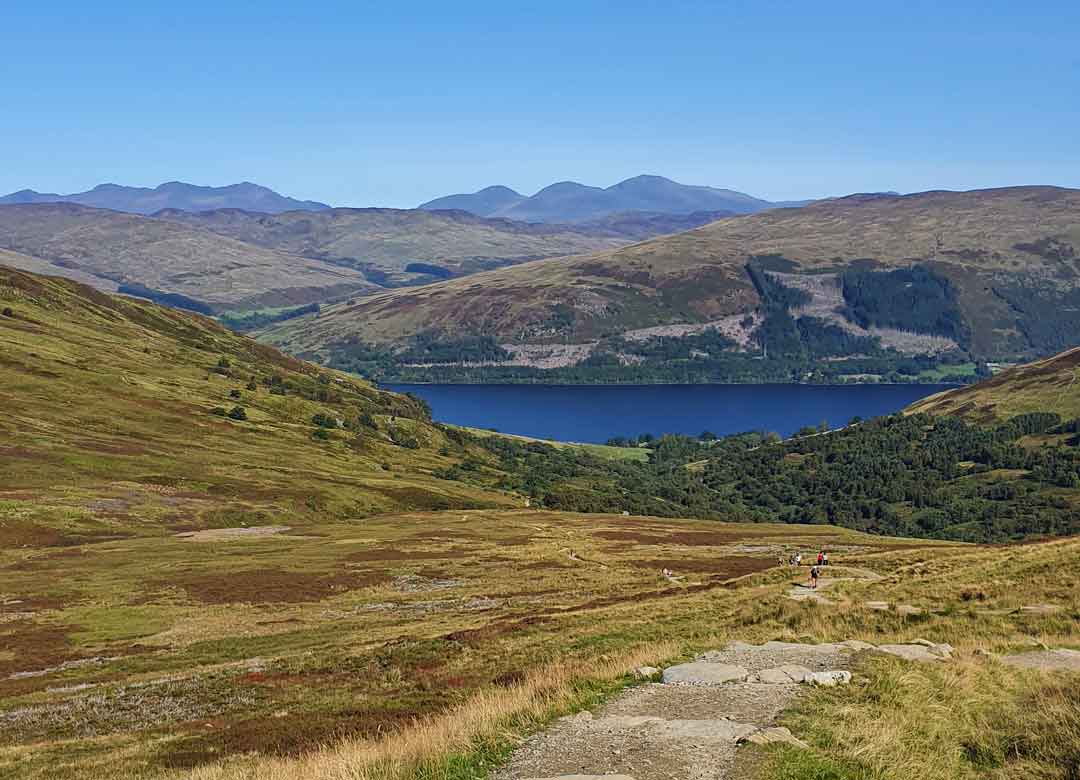
For Clan MacGregor – Balqhidder and Loch Voil
Most known for being rabble rousers against other clans – stealing lands, fighting rivals and raiding cattle was a favourite MacGregor pastime – especially against Clan Campbell.
However, it was the Battle of Glen Fruin between Clan MacGregor and Clan Colquhoun that eventually led to the clan’s name being abolished in April 1603 by James VI of Scotland and the hanging of Alistair MacGregor and eleven of his chieftains at the Mercat Cross in Edinburgh 1604.
Clan McGregor’s most famous son is the outlaw Rob Roy MacGregor who was born in 1671 – his exploits were latterly made into a folk hero by Sir Walter Scott. The clan was continued to be persecuted until 1774 when the laws against them were repealed and the clan was reformed. Here is how to discover Clan MacGregor.
- Visit Rob Roy McGregor’s grave – at the head of Loch Voil is the village of Balquidder where Rob Roy McGregor is buried. You can visit the grave in the churchyard.
- Explore Loch Voil – The lands around Loch Voil were originally Clan MacClaren country and became a battleground for ownership with Clan MacGregor. For a true taste of the MacGregor lands, climb Creag an Turic above the village. You can see why it was used as a lookout – you can see for miles.
- Explore the Trossachs and the MacGregor glens – the clan was based across Glen Dochart, Glen Orchy, Glen Lyon, Glen Strae, and Glen Gyle, all within Highland Perthshire. Drive to the end of Scotland’s longest Glen – Glen Lyon – to visit the Post Office and Tea Room.
> Read more: how to visit Loch Lomond and the Trossachs
> Stay at at Balqhuidder Mhor 84 and its big sister Monachyle Mhor just up the road, are stylish and vintage chic boutique hotels with a fantastic welcome.
> Find out more about Clan Gregor
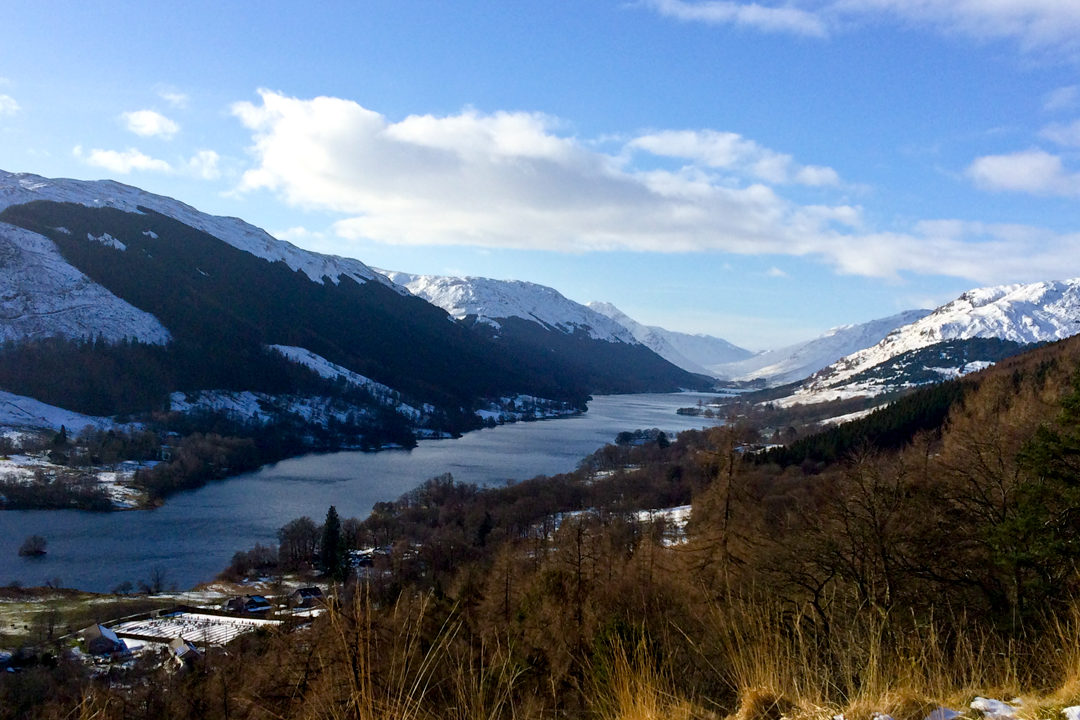
For Clan Campbell – Inveraray
One of the largest and most powerful clans in Scottish history, the Campbells were big supporters of King Robert the Bruce, benefitting from his patronage – Sir Neil Campbell was even married to Mary, Robert’s sister.
Clan Campbell’s chief rivals for control of lands in Argyll and the west coast of Scotland were the MacDonalds, and this rivalry led to one of the most famous massacres in Scottish history. In 1692, 38 unarmed members of the Macdonald clan were killed in the Massacre of Glencoe, part of a British Government initiative to suppress Jacobite risings.
The Campbells went on to support the British Government in the Jacobite risings. Today the Duke of Argyll is a hereditary peerage – and part of the nobility of Scotland. Here is how to discover Clan Campbell.
- Inveraray Castle – the ancestral home of the Duke of Argyll, Chief of the Clan Campbell. Taking 43 years to complete, the castle was designed by celebrated Scottish architect William Adam and finished by his sons James and Robert Adam. The castle is still lived in by the Campbell family and tours are available (book in advance) of the rather lavishly decorated interior. The castle has gorgeous gardens and woodlands which are free to explore. Visit Inveraray Castle for booking information.
- Kilchurn Castle – the seat of the Campbells of Glenorchy. Constructed in the mid-15th century, the castle holds a strategic postion on Loch Awe. The castle is now in the care of Historic Environment Scotland.
- Innes Chonnel Castle – the the original seat of Clan Campbell in the 11th century. You can see the island in Loch Awe near Dalavich.
> read more: how to visit Inveraray
> stay at: The Loch Fyne Hotel – a dog-friendly spa hotel on the lochside with a pool, restaurant and bar, The Inverary Inn – opened in 1755, this is a traditional Scottish inn, in the heart of town. Brambles of Inverary – traditional rooms alongside a popular bistro and bakery.
> Find out more about Clan Campbell
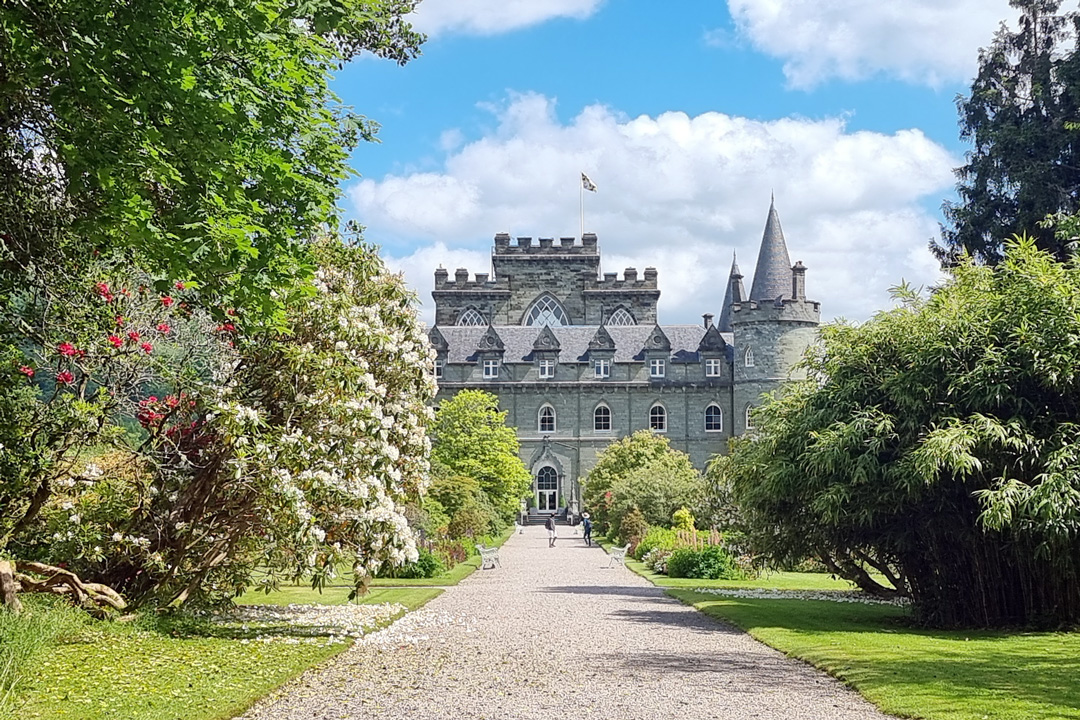
For Clan Mackenzie – Kintail and Eilean Donan Castle
Hailing from Kintail, Clan Mackenzie held huge lands stretching from the Outer Hebrides to the Black Isle – gained from their enduring loyalty to the Scottish monarchy. Often acting as peacekeepers between the warring clans of the highlands of Scotland, the Mackenzies also happily joined in with the conflict – 500 Mackenzies contributed to the Battle of Bannockburn. Here is how to discover Clan Mackenzie.
- Eilean Donan Castle – probably the most iconic of all of Scotland’s castles and sits at the junction of three beautiful lochs – Eilean Donan Castle sits at the join of Loch Duich, Loch Long and Loch Alsh. The castle was built in the thirteenth century as a stronghold of the Clan Mackenzie and destroyed in 1719 in retribution for the Mackenzie’s involvement in the Jacobite risings. The current castle is a 20th century reconstruction.
- Castle Leod – located near Strathpeffer, Castle Leod is the home of the clan chief of Clan Mackenzie and is a private home. If you have watched Outlander, Castle Loed is the inspiration for Castle Leoch, the seat of the fictional Clan Mackenzie – although in the TV series Doune Castle is used. You can visit Castle Leod during one of the annual open days.
- Cross the Mam Ratagan Pass – mimicking the fjords of New Zealand’s south island, the view over Loch Duich to the Five Sisters of Kintail – and across the lands of the Mackenzies – is one of Scotland’s best. There are two viewpoints on Mam Ratagan from which to admire the view.
> read more: how to visit Kintail
> stay at Kintail Lodge Hotel, Ratagan Youth Hostel, or the The Cluanie Inn
> Find out more about Clan Mackenzie
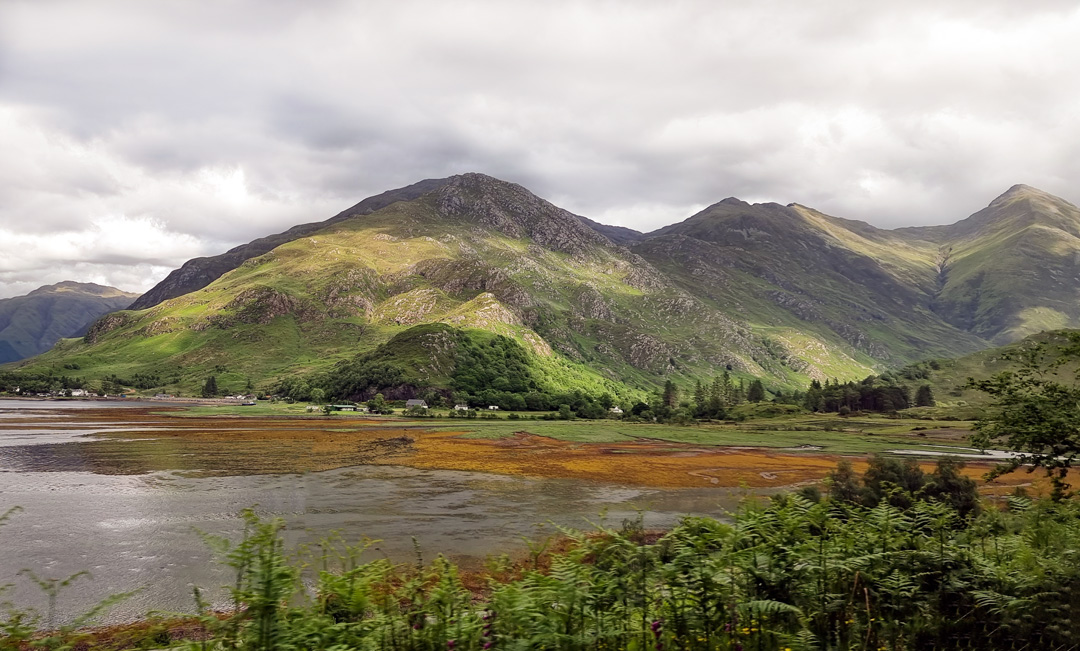
Clan Fraser of Lovat – Beauly and Loch Ness
With lands around Loch Ness and Beauly, Clan Fraser of Lovat is not to be confused with the other branches of Fraser clans – including those in Aberdeenshire and the Lowlands. Otherwise known as the Fighting Frasers, Clan Fraser of Lovat has been made famous by the Outlander series of books which feature a fictional member of the Fraser family, Jamie Fraser.
One of the most famous real life Frasers include Sir Simon ‘the Patriot’ Fraser who had command of the Scottish forces in 1303 who defeated 30,000 invaders with only 8000 of his own men and saved Robert the Bruce’s life three times!
- Beauly Priory – the graves of the Frasers of Lovat from the early 1300s can be found in the graveyard of Beauly Priory.
- Castle Dounie / Beaufort Castle – the traditional seat of the Lords Lovat, Chiefs of Clan Fraser of Lovat, Castle Dounie is located on the River Beauly. Member of Clan Fraser and fancy living in the castle? Well you could as the castle is actually up for sale (at 2024)
- Reelig Glen – explore this steep wooded glen south of Beauly full of firs, cedars and spruces and find the 62m Dùghall Mòr (Big Douglas) which was once Britain’s tallest tree. James Baillie Fraser (1783 – 1856), the Scottish explorer laid out the glen with the fabulous trees. Visit Reelig Glen.
- Wardlaugh Mausoleum – located at Wardlaw Graveyard in Kirkhill village, the Wardlaugh Mausoleum was built for the Lovat Fraser family in 1634.
> Stay at: Dornie Lodge or the stunning Old Manse at Muir of Ord.
> Find out more about Clan Fraser of Lovat
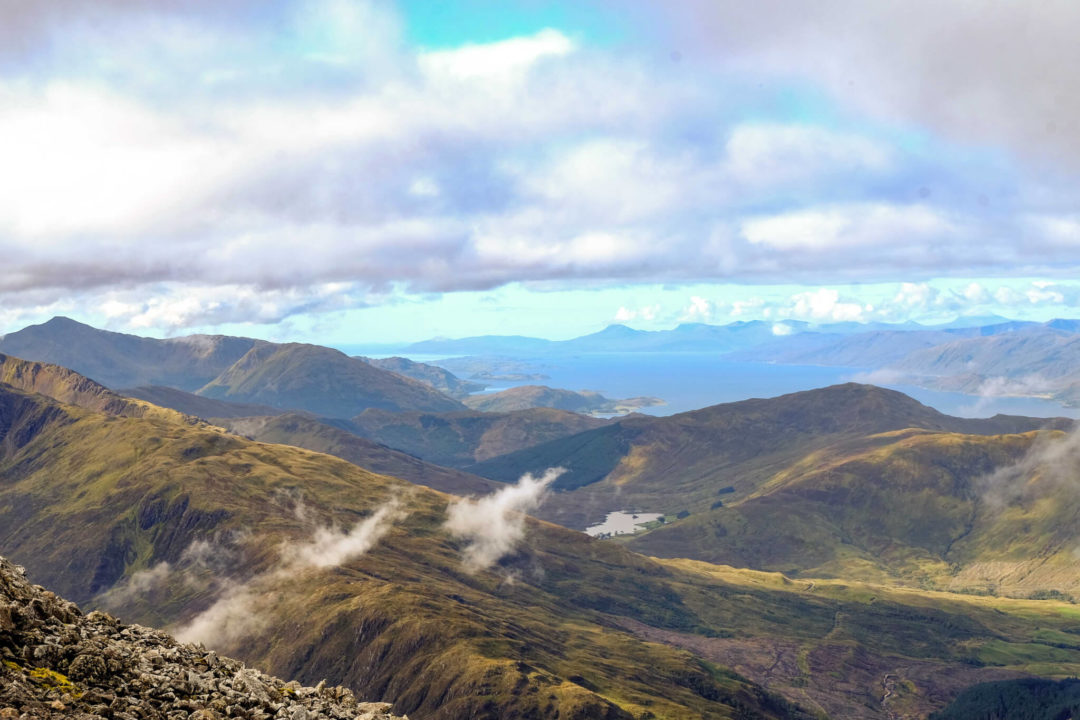
Clan Cameron – Lochaber and Spean Bridge
Hailing from Lochaber, Clan Cameron’s lands centre around Fort William and included the mighty Ben Nevis. The first accepted chief of the clan was recorded as Donald Dubh in the 1400’s and subsequent clan chiefs fought on the side of the Stuarts and Jacobites. The chief of the clan is known as ‘Cameron of Lochiel’ – find out more Clan Cameron.
- Visit Tor Castle – said to the be the first of the Cameron castles, Tor Castle is located outside of Fort William and is now ruined. The castle ownership is disputed – it is said to be built on Clan Mackintosh lands – and was once owned by Banquo, the Thane of Lochaber from Shakespear’s Macbeth.
- Vist the Clan Cameron Museum – located at Achnacarry, the Clan Cameron Museum is open from the 1 April 2024 – 15 October 2024, 11am – 3pm. The Museum traces the history of Clan Cameron through 27 generations as well as the 79th Cameron Highlanders.
- Stay at Achnacarry Castle – Originially built by Sir Ewen Cameron of Lochiel in 1655 further away from Tor Castle and Clan Mackintosh, Achnacarry Castle was destroyed by government troops led by the Duke of Cumberland after the Battle of Culloden. The ‘new’ castle you see today was built in 1802 and was used by the Commandos during the Second World War as their training ground. You can now stay at Achnacarry Steading Apartments adjacent to the castle.
- Eas Chia-aig falls – located at the eastern end of Loch Arkaig, the beautiful Eas Chia-aig waterfalls are located on the Achnacarry Estate were used in the film Rob Roy.
> Read more: how to visit Fort William
> stay at: The Garrison, the Lime Tree An Ealdhain, the Cruachan Hotel, or The Nevis Bank Inn or Inverlochy Castle Hotel.
> Find out more about Clan Cameron
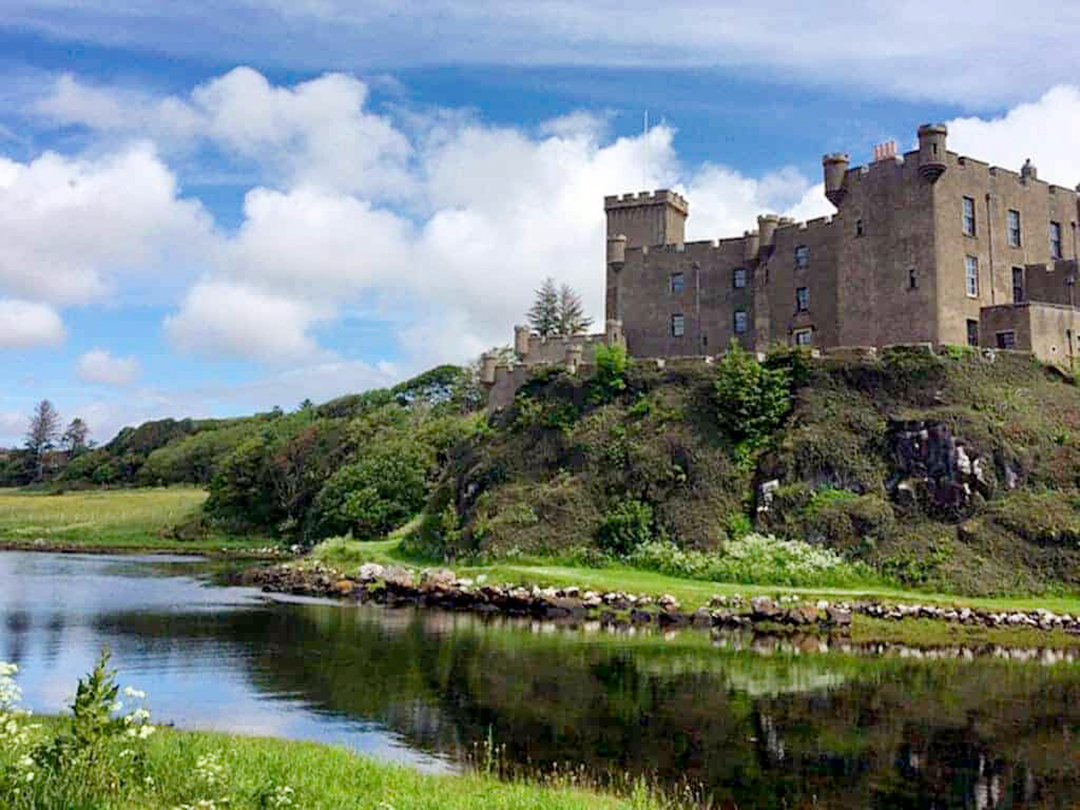
Clan MacLeod – The Isle of Skye and Raasay
There are two main branches of Clan MacLeod – the the MacLeod of MacLeod (Dunvegan, Harris and Glenelg) and Macleod of The Lewes (Lewis, Assynt and Raasay) both descended from Olaf the Black, one of the last Norse Kings of Man. The clan’s home, Dunvegan Castle is the only Highland castle o have been continuously occupied by the same family for 800 years. Here is how to visit Clan MacLeod’s lands:
- Dunvegan Castle, Isle of Skye – the home of Clan MacLeod, Dunvegan Castle sits in a stunning location on the seafront, and the gardens are also lovely to wander around.Visit the castle to learn not only about the history of this clan but also the role of clans today – as well as their most famous member, Dame Flora MacLeod.
- The MacLeod Tables – two strange, very flat-topped hills – also called Healabhal Mhòr (1,539 ft) and Healabhal Bheag (1,601 ft) – which were formed by lava flows and then Glacial retreat in this part of Skye 58 million years ago. Climb the Tables with this walk from Walkhighlands (7miles, 4 hours)
- Macleod’s Maidens – these three sea stacks to the south of the Duirinish Peninsula are said to be the wife and two daughters of one of the Chiefs of the Clan MacLeod – who sadly drowned. Visit the Macleod’s Maidens on this 10 mile walk from Orbost.
- Stay at Raasay House – originally built as a a laird’s house by the Macleods of Raasay, you can now stay at this Raasay House Hotel, outdoor centre and restaurant on the Isle of Raasy.
> Read more: the complete guide to the Isle of Skye
> stay at: the trendy Marmalade or the Bosville Hotel or the classic accommodation at The Portree Hotel. If you are looking for luxury accommodation on the Isle of Skye, try the Three Chimneys and The House Over By, Kinloch Lodge and restaurant on the Sleat Peninsula, or Edinbane Lodge.
> Find out more about Clan MacLeod
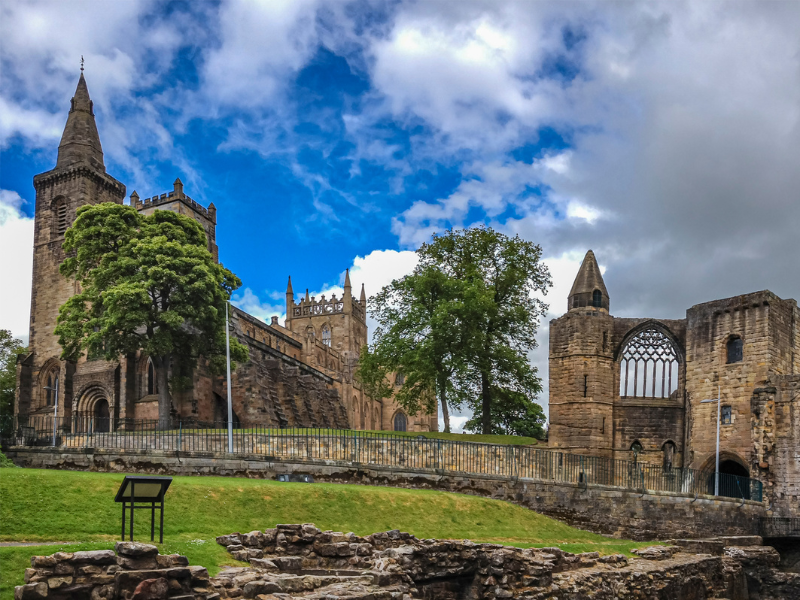
Clan Bruce – Clackmannanshire and Dunfermline
One of the Royal houses, Clan Bruce (Family of Bruce) has produced two of the Scottish Kings – Robert the Bruce and David II of Scotland. The story of Robert the Bruce is one of Scotland’s most well known, making him a national hero. While the Bruce clan is a lowland clan, and their lands are most associated with Clackmannanshire and Dunfermline, there are lots of sites associate with Robert the Bruce all over Scotland.
- Dunfermline Abbey – Scotland’s newest city, Dunfermline was once the ancient capital of Scotland and is the burial place of our most famous king – Robert the Bruce. Bruce’s heart might rest in Melrose, but his bones lie in Dunfermline Abbey. Elizabeth de Burgh, Robert’s wife who was also buried in the Abbey in 1327. Look out for the King Robert The Bruce carved into the Abbey’s tower.
- Melrose Abbey – the final resting place of King Robert the Bruce’s heart, Melrose Abbey is probably the best known and best preserved of the four Scottish Border’s abbeys.
- King’s Cave, Arran – whether or not they once sheltered Robert the Bruce, the King’s Cave on Arran’s west coast still make for an impressive site. There are impressive views of the Kintyre Peninsula and Drumadoon Point. The walk takes between 1-2 hours and starts at a signposted car park near Machrie.
- Clackmannan – Clackmannan Tower dates back to 1359 and built by the Bruce family, after the lands were gifted to Sir Robert Bruce. It is thought that Clackmannanshire is named after Robert the Bruce’s glove (or mannan).
- Stay at Brucefield Estate – stay in a bothy on the the 1000-acre Brucefield Estate, home to three gorgeous luxury Scandi-style eco cabins – Tod, Mertrick and Brock. They also have a fabulous holiday cottage – Slackbrae.
> read more: how to visit Dunfermline and the complete guide to Clackmannanshire
> Stay at a four star spa hotel outside of Alloa, Inglewood House and Spa is a luxurious place to stay in Clackmannanshire, stay in the The Tower, a luxury apartment with Dollarbeg Castle, go glamping at the Devon River Glamping Pods, located outside of Menstrie, Broomhall Castle Hotel is a stunning old baronial castle in which you can stay.
> Find out more about Clan Bruce (Family of Bruce)
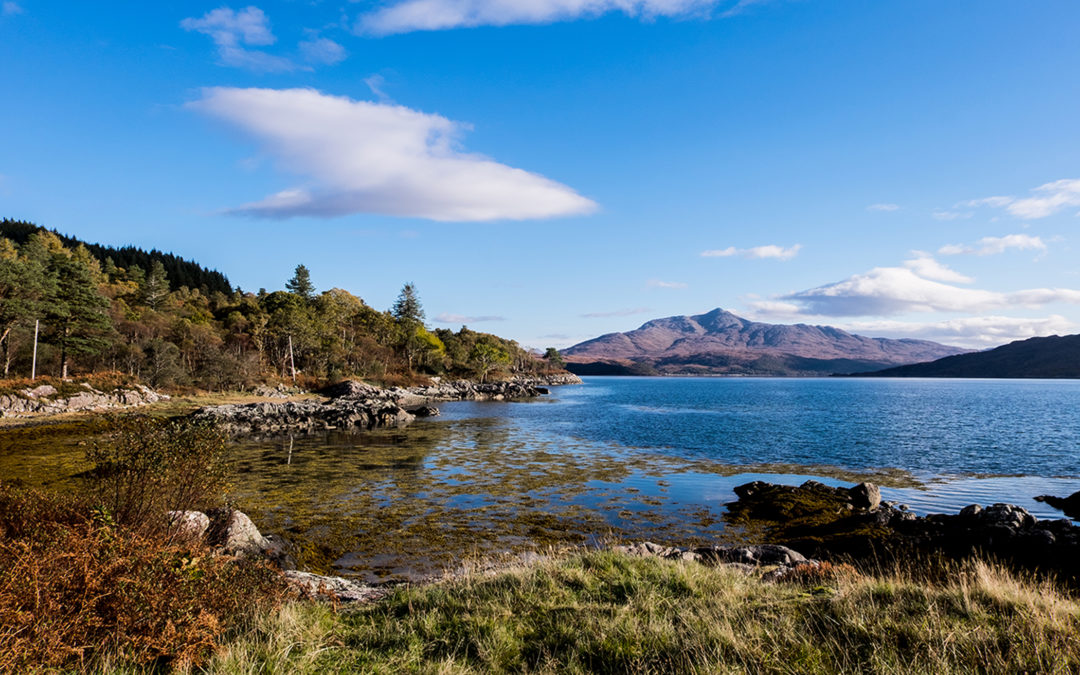
Clan Maclean – the Isle of Mull, Coll and the West Highland Peninsulas
Once the owners of the isles of Mull, Tiree, Islay, and Jura, Clan Maclean are one of the oldest highland clans in Scotland. Named after the 13th century warrior and Scottish chieftain, Gillean of the Battle Axe, Clan Maclean were fearsome warriors. With six branches across the highlands, the chief of the clan is now called Maclean of Duart and Morvern.
- Visit Duart Castle on the Isle of Mull – the home of Clan MacLean, the castle is best viewed in all its glory from the ferry from Oban to Craignure on Mull. The crossing to Mull takes around 55 minutes and must be booked in advance, especially in Summer.
- Stay at Mingarry Castle, Ardnamurchan – the remote regions of Morvern, Ardgour, Moidart and Sunart were once Clan Maclean lands but are now home to just 2000 people. Mingarry Castle can be found beside the village of Kilchoan – the castle was stolen from the Mackenzies by the Macleans! You can now stay at Mingarry Castle Hotel.
- Over on the Isle of Coll, the old and new Breacachadh Castles were Maclean strongholds. You can stay in Breacachadh Castle – it is now self catering accomodation.
> read more: the complete guide to the Isle of Mull and how to visit the West Highland Peninsulas
> stay here: Stay at the Bellachroy Hotel in Dervaig near Calgary Bay, the Isle Of Mull Hotel and Spa is located near Craignure, Glengorm Castle, the Park Lodge Hotel and the Western Isles Hotel, Harbour Guest House, and Burnbank BnB are handy for Tobermory. For Iona stay at the St Columba Hotel, or the Inn at Port nan Gael. If you are looking for a holiday home on Mull try Normanns Ruh or Glenforsa House.
> Find out more about Clan Maclean
Love from Scotland x
